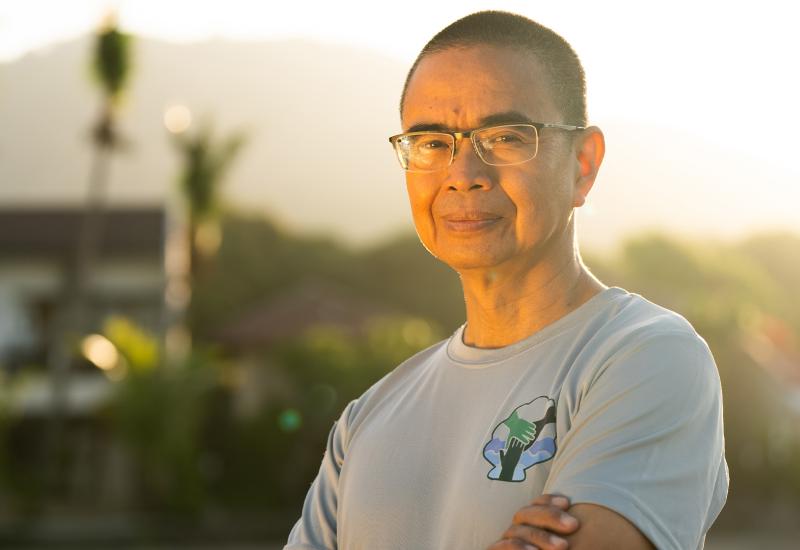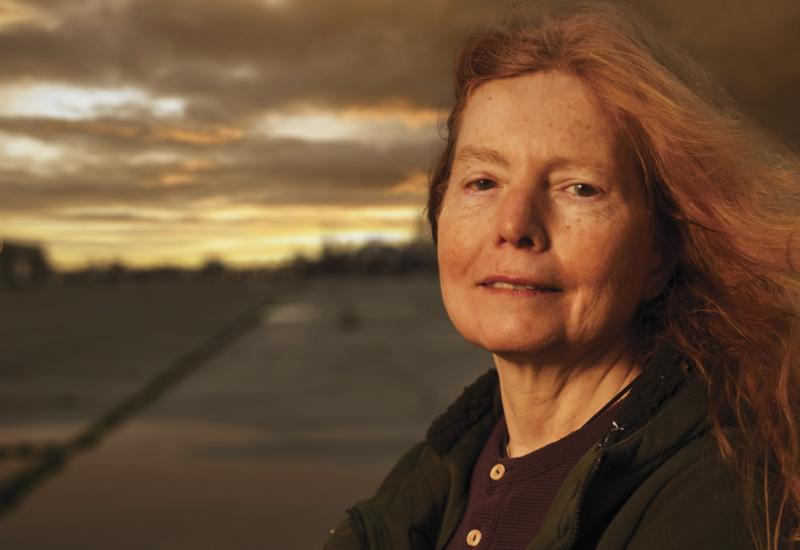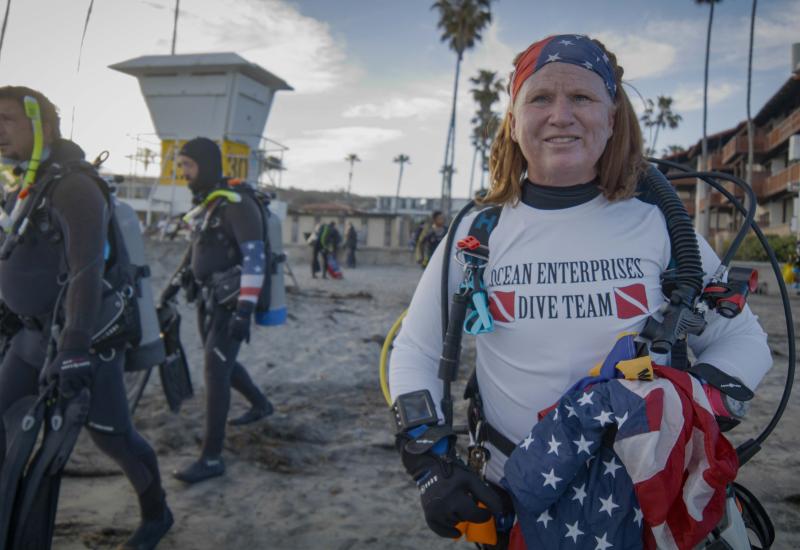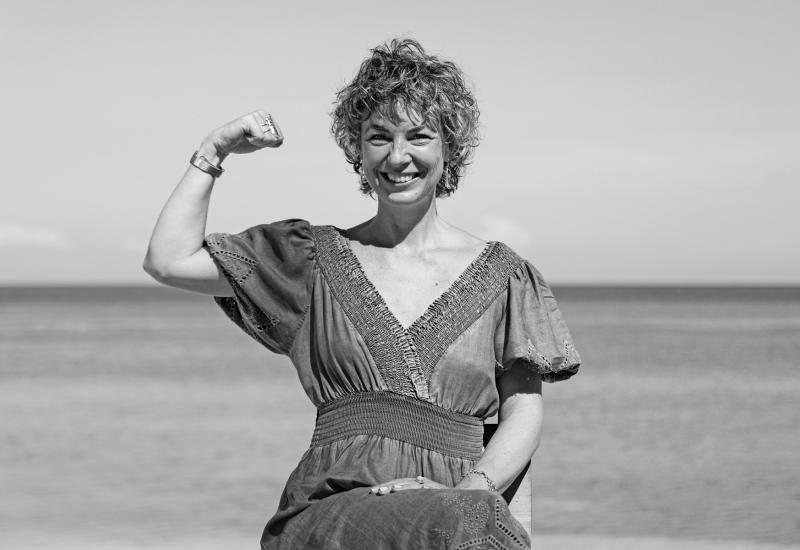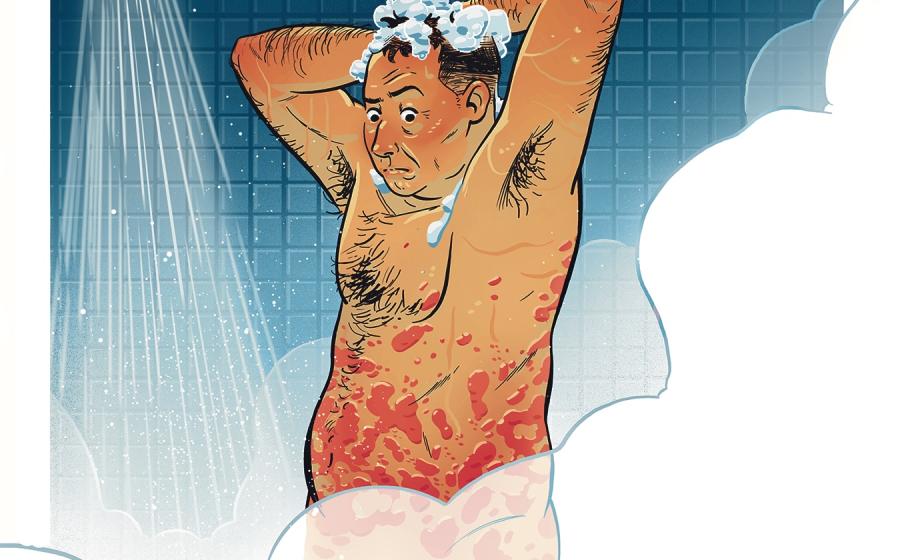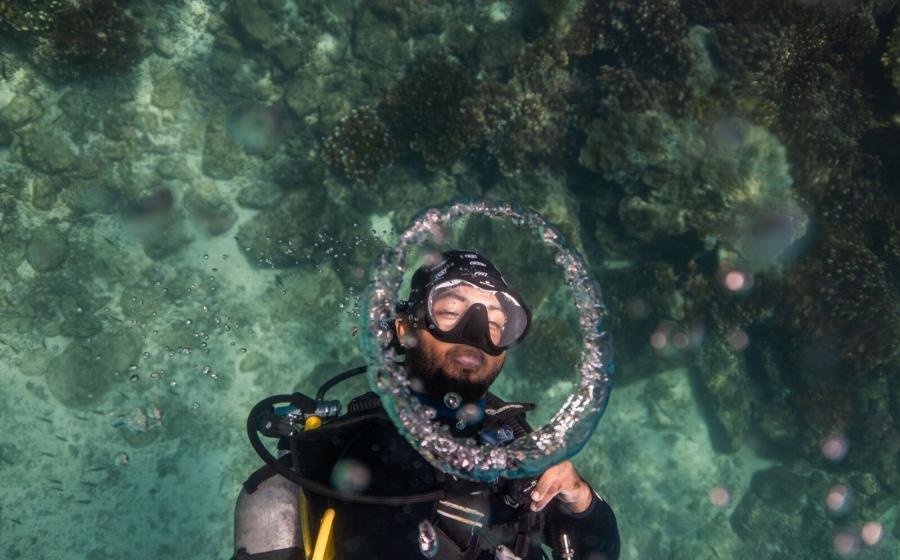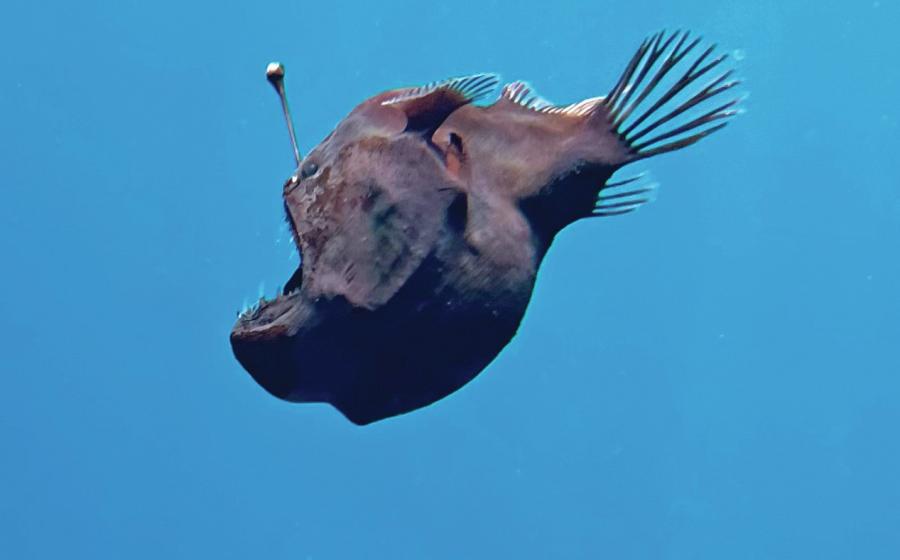Monterey Kelp Restoration Advocate Keith Rootsaert Awarded May Sea Hero Honors

Leslie RootsaertRootsaert and his golden retriever Goofy.
Year Dive Certified: 1985
Age When Certified: 19
Dive Certification Level: Divemaster
Words to Live By: Inspiration is highly contagious.
Instagram: @g2krproject
Facebook UrchinsKelpOtters
As founder of the grassroots Monterey, California-based Giant Giant Kelp Restoration Project (G2KR), Keith Rootsaert has led hundreds of volunteer divers to push for policy change and directly take part in addressing the loss of kelp along the California coastline. Rootsaert has also spearheaded research to determine the factors behind kelp loss and reestablishment, and secured permits for G2KR to remove urchins from the water for scientific purposes.
For his research and dedication to supporting this unique ecosystem while empowering recreational divers to help save California kelp forests, Rootsaert is our May Sea Hero.
Q: What led you to tackle the issue of kelp restoration in Monterey?
A: When I first learned to dive in 1985 in Monterey, I saw how beautiful kelp forests were and how life seemed to fill every nook and cranny of the rocky reefs. That was my baseline of what a kelp forest was like. I began volunteering for Reef Environmental Education Foundation and Reef Check to give back to the ocean and contribute by becoming a citizen-science diver.
In 2013, I was diving in the cold waters of Puget Sound in Washington and saw many huge, 20-armed sea stars turning to goo. Sea star wasting disease caused stars to disintegrate right on the reef or sand. The disease quickly decimated many species of starfish over the entire West Coast, from Baja to Alaska. Not long after that, I was doing work for Reef Check as a volunteer in Monterey and noticed the kelp disappearing. Urchin barrens—purple moonscapes with almost no life except purple urchins—were expanding. A multiyear marine heat wave caused urchins to become superabundant and kelp to do very poorly.
I’m not a scientist—I’m a general contractor and an engineer. Sometimes it takes someone looking at a problem from a different perspective, to be willing to take on a problem. I simply found myself in a good position with my experience and connections to the diving community to hatch an arguably crazy plan that the public agencies were not willing to take on. In 2018 I started the Giant Giant Kelp Restoration Project. I worked with Reef Check to get permits to do experiments in urchin barrens to find out how many urchins we needed to remove to allow kelp to regrow. We found that we had to have less than 0.5 urchins on a square meter of reef for kelp to grow back.
Around the same time, Bruce Watkins, of California Diving News, and I submitted a petition to start clearing urchin barrens that had completely eaten many of the kelp forests in Monterey. Meanwhile, the number of divers alarmed by the loss of kelp forests continued to grow and they joined my project as volunteers. Eventually, in April 2021, with the help of hundreds of volunteers sending letters of support and speaking out at California Fish and Game Commission meetings, we were given permission to begin working on clearing the urchin barrens in a part of Monterey Bay called Tanker’s Reef.
Q: Tell us about your success removing purple and red urchins at Tanker’s Reef.
A: The Fish and Game Commission authorized a 25-acre area to work on. They gave us three years to reduce the urchin population to less than two urchins per square meter with trained volunteer divers, using only hand tools. Reef Check, the Monterey Bay National Marine Sanctuary, and California Department of Fish and Wildlife biologists advised us on the scientific design of our project and were tasked to monitor our work.

Patrick WebsterDivers Matt Hoehn and Andrew Kim collect urchins at Tanker’s Reef for an urchin ranching experiment.
By 2020, I had a group of volunteers willing to do the behind-the-scenes work to make this project a success. We worked with local instructors to develop a PADI Kelp Restoration specialty certification to teach divers to recognize marine invertebrates on the reef and cull urchins safely, without harming any surrounding marine life. Divers report their urchin culling data online for scientists to analyze.
We now have over 80 certified kelp restoration divers who have made over 650 dives and spent over 500 hours of work underwater. We met all of the Fish and Game Commission goals for our project in under five months. We spent many hours culling urchins to form a protective buffer to defend a small kelp forest that is now growing at Tanker’s Reef. With urchins continually migrating toward our young kelp forest from the surrounding urchin barrens, it is a year-round effort to keep the kelp alive.
Q: What else can divers do to become involved with this cause?
A: Climate change is the reason we are losing our kelp forest ecosystems on the West Coast of North America. This is where we need to draw a line in the sand and say, “Not on my watch!”
We are obliged to do our part for future generations. What we each need to do is practice ocean stewardship and make protecting it part of our personal habits. That means doing everyday actions that reduce carbon emissions that enter the atmosphere and end up in the ocean.
Q: Do you have plans to expand this project beyond Monterey?
A: The marine protected areas that surround the Monterey Peninsula are swamped by dense urchin barrens, and the kelp is gradually getting eaten as the number of urchins continues to increase. That’s where we want to begin work next.
Unfortunately, marine management policy is aimed at leaving these areas undisturbed, which, given the circumstances, is a death sentence for more kelp forests. When we are not working on kelp restoration at Tanker’s Reef, much of our current effort is spent trying to convince California state agencies to change their policy, but it is very difficult to convince authorities that what is happening underwater is an emergency. Unlike divers, who see the decimated kelp forest ecosystem firsthand, most public officials do not seem to understand the urgency and magnitude of the problem and will not yet allow us to take action in marine protected areas.
We recently incorporated our nonprofit as the California Kelp Restoration Corps with the goal of restoring kelp throughout California in the future. We hope through our example, knowledge, advocacy and support, kelp restoration will be developed in other coastal states and countries.
Each Sea Hero featured in Scuba Diving receives a Seiko SRPD43 watch valued at $525. For our December issue, judges select a Sea Hero of the Year, who receives a $5,000 cash award from Seiko to further their work. Nominate a sea hero at /seaheroes.

